How Hot Is The Earth's Core And Why?
♦ What Is The Highest Peak On Earth? The Answer Is Not Everest
♦ How Many Mountains Are There on Earth Today: Top 10 Highest and Smallest
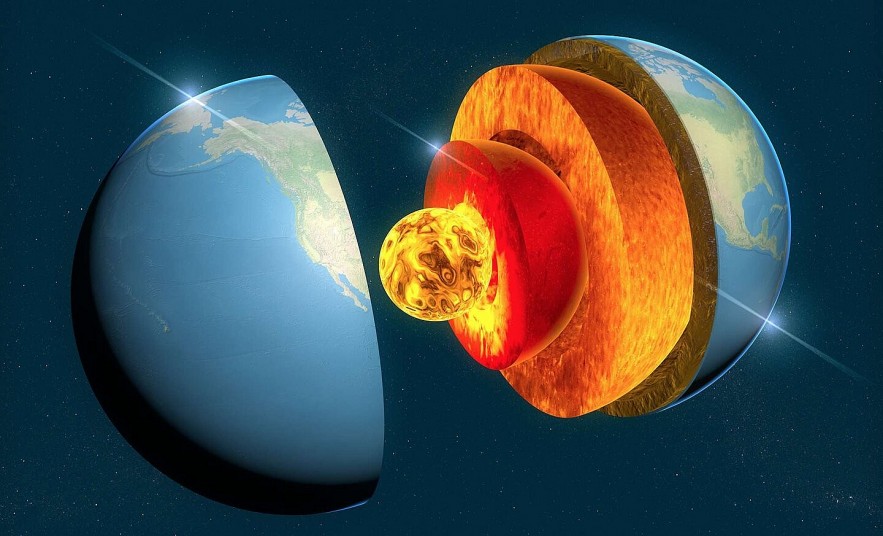 |
| How Hot is the Core of Earth? Photo: Getty Images |
| Contents |
Our earth still contains many mysteries that scientists are continuing to discover.
Earth is the only planet with life discovered by humans up to the present time. However, all that we affect or natural phenomena are only located on the outermost part of the globe.
If you split the Earth in two, what interesting things will you discover?
What is the Structure of the Earth?
It is estimated that the center of the planet lies at a depth of more than 6000km. Even the outermost edge of the Earth's core is 3000km away from us. While the deepest hole that man has drilled on the Earth's surface is only 12.3km.
Any lava or diamond - which is created under conditions of great heat and pressure is also only located at an altitude of a few hundred kilometers below the ground. Imagine, you have a magic digging machine like Doraemon's. You will also need to dig about 5,100km to reach the edge of the Earth's core.
The Earth is not a completely solid sphere. The structure of the Earth consists of three main parts:
Earth's Crust
This is the hard material with a thickness of between 5km and 70km. The crust makes up only about 15% of the volume, 1% of the entire Earth's weight. However, this is an important place for nature as well as human activities.
The Earth's crust is composed of different rock layers including sedimentary rock, granite, basalt...
Melting Mantle Layer
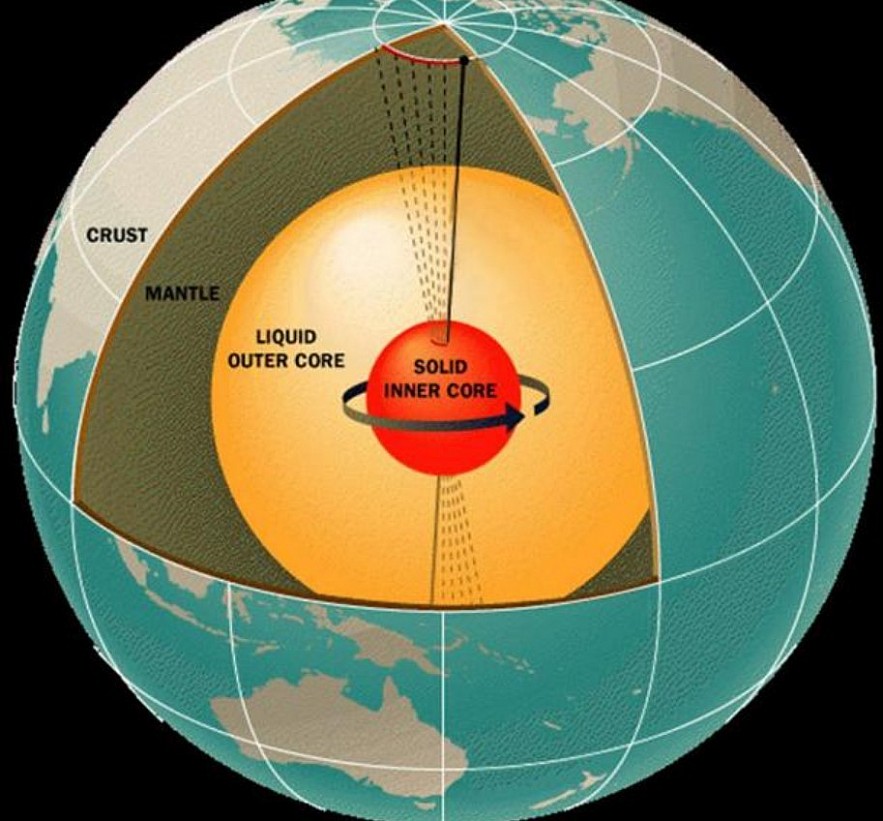 |
| Structure of the Earth |
Just below the Earth's crust is the Mantle layer with a depth of 2900 km. This section consists of 2 main floors with the feature that the deeper you go, the higher the temperature. The material state of the mantle also changes plasticity near the Earth's crust, the closer to the core, the denser.
This is the place to accumulate and consume energy from deep within the earth. It generates activity that changes the structure of the Earth's surface. This is also the source of phenomena such as earthquakes, volcanoes, etc.
Earth's Core
The center of the Earth remains a veil of secrecy. But now, humanity has learned a lot about the core of the earth. It is located in the innermost part of the Earth and we will learn more about it in the following section.
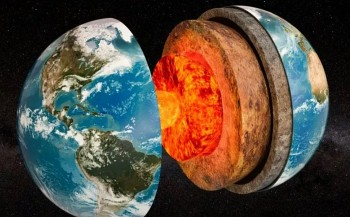 Where is the Hottest Part of the Earth and How Hot is It? Where is the Hottest Part of the Earth and How Hot is It? |
What is the Role of the Earth's Core in Life?
The core is the solid spherical part of the Earth's interior. It has a radius of about 1,220 km (about 70% of the moon's radius). The Earth's core is composed mainly of an alloy of Iron and Nickel. This is also where the Earth's magnetic field is generated. The magnetic field generated by the core protects the planet from storms of the Sun's magnetic field.
When digging to a depth of about 12km, the measured temperature is 180 degrees Celsius. And if you continue to dig about 15km further, it is estimated that the temperature can reach 300 degrees. This temperature will destroy all equipment so deep drilling is not done.
How Hot Is The Earth's Core And How To Measure The Temperature?
How can the temperature of the innermost core of the planet be measured? Of course, humans cannot drill and insert thermometers into the Earth.
The melting point of iron will be measured with great accuracy. Then, use the results to calculate the temperature of the outer core, the inner core.
Measurements, first taken in the 1990s to get a graph of the melting of iron, have estimated the core of the earth to be as hot as 5,000 degrees Celsius.
In the new experiment, scientists at France's CEA research agency used X-rays to measure small samples of iron under extreme pressure in the laboratory, thereby analyzing how iron crystals form. and melt. As a result, scientists agree that the Earth's core is as hot as 6,000 degrees Celsius, equivalent to the surface of the sun.
The core of the globe is divided into an inner core and an outer core. The index difference between these two core types is about over 1500 degrees Celsius. It is this difference along with the rotation of the Earth that generates the magnetic field.
Is Earth's Core Cooling?
Scientists think that the Earth's core has decreased in temperature compared to the time it was formed. However, its temperature decline is relatively slow at a rate of about 100 degrees Celsius per billion years. For the core of the Earth to cool completely from 6,000 degrees Celsius today, we need to wait up to 60 billion years.
If the Earth cooled down and stopped rotating, there would be no more natural disasters such as earthquakes and volcanoes. Besides, the magnetosphere that protects the Earth is also gone. The planet has lost its protective armor against the effects of the Sun's electromagnetic storms.
Because the lifespan of the Sun is estimated at 9-10 billion years. The sun may still exist for another ~5 billion years. If the sun "died" then surely life on Earth would have disappeared. Humanity will disappear before the planet's core cools. This is why the cold core hypothesis seems unlikely.
Earth's Core Is Cooling Faster Than Expected - UpdateResearchers have found evidence that Earth's core structure is able to radiate heat to the outside more quickly than previously thought. To simulate conditions in the Earth's core, scientists created a substance called Bridgmanite. Studies show that the thermal conductivity of this mineral is 1.5 times higher than previously estimated. This shows that the flow of heat from the core into the mantle is also higher, causing the Earth's core to radiate heat faster than before. |
Why is Earth's Core So Hot?
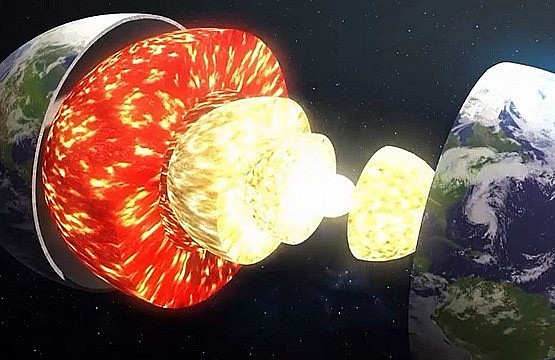 |
| Why is Earth's Core So Hot |
To answer this question, we need to go back to the formation of the Earth. According to scientific theories, there is a relationship between the earth and the sun. The Earth was originally a mass of hot gas and rotated at great speed. Then, the hot gas became liquid and condensed, shrinking in size as it orbited the Sun at regular intervals.
The mass of gas gradually takes on a spherical shape but is still red hot. Over time, the Earth slowly cooled, the outer crust forming the surface. And none of us know for sure how long it took the Earth to form its crust. The bottom of the crust is still hot to this day.
Scientists think that the hot Earth's core is due to a combination of the simultaneous activity of radioactive substances and residual heat from the formation of this planet. When the matter that makes up the Earth creates a kinetic energy. This kinetic energy is converted into heat when the motion of matter stops at the "pre-Earth".
 How Many Seas Are There on Earth Today: Full List, Top Largest and Smallest Seas How Many Seas Are There on Earth Today: Full List, Top Largest and Smallest Seas This article provides a list of seas of the World Ocean, including marginal seas, areas of water, various gulfs, bights, bays, and straits. |
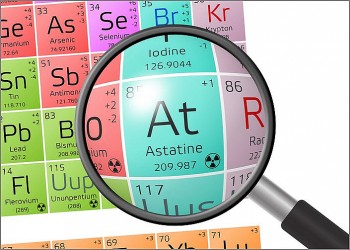 Top 11 Rarest Elements On Earth Today Top 11 Rarest Elements On Earth Today Do you know all rare elements on earth? What is the rarest type? Read on to explore the interesting facts about the rarest elements on ... |
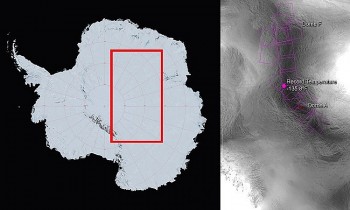 Where is the Coldest Place on Earth - According to NASA Satellite Where is the Coldest Place on Earth - According to NASA Satellite According to NASA, the coldest place on Earth is the East Antarctic Plateau with a temperature of -93.2 degrees Celsius. |
 Why Does the Moon Affect the Tides Though It is 384,000 KM from Earth Why Does the Moon Affect the Tides Though It is 384,000 KM from Earth Tides are the rise and fall of sea water in a cycle of astronomical changes. Tides occur due to the Moon's gravitational pull on the ... |
 What Is The Lightest Material On Earth? What Is The Lightest Material On Earth? If you think the air is the lightest on the planet, you’re wrong. A study has found a new superlight metal which is even lighter ... |























